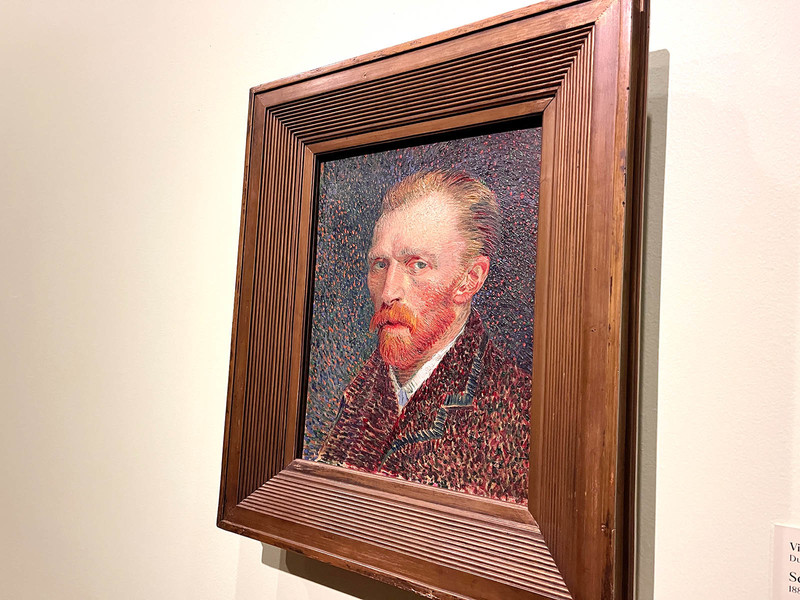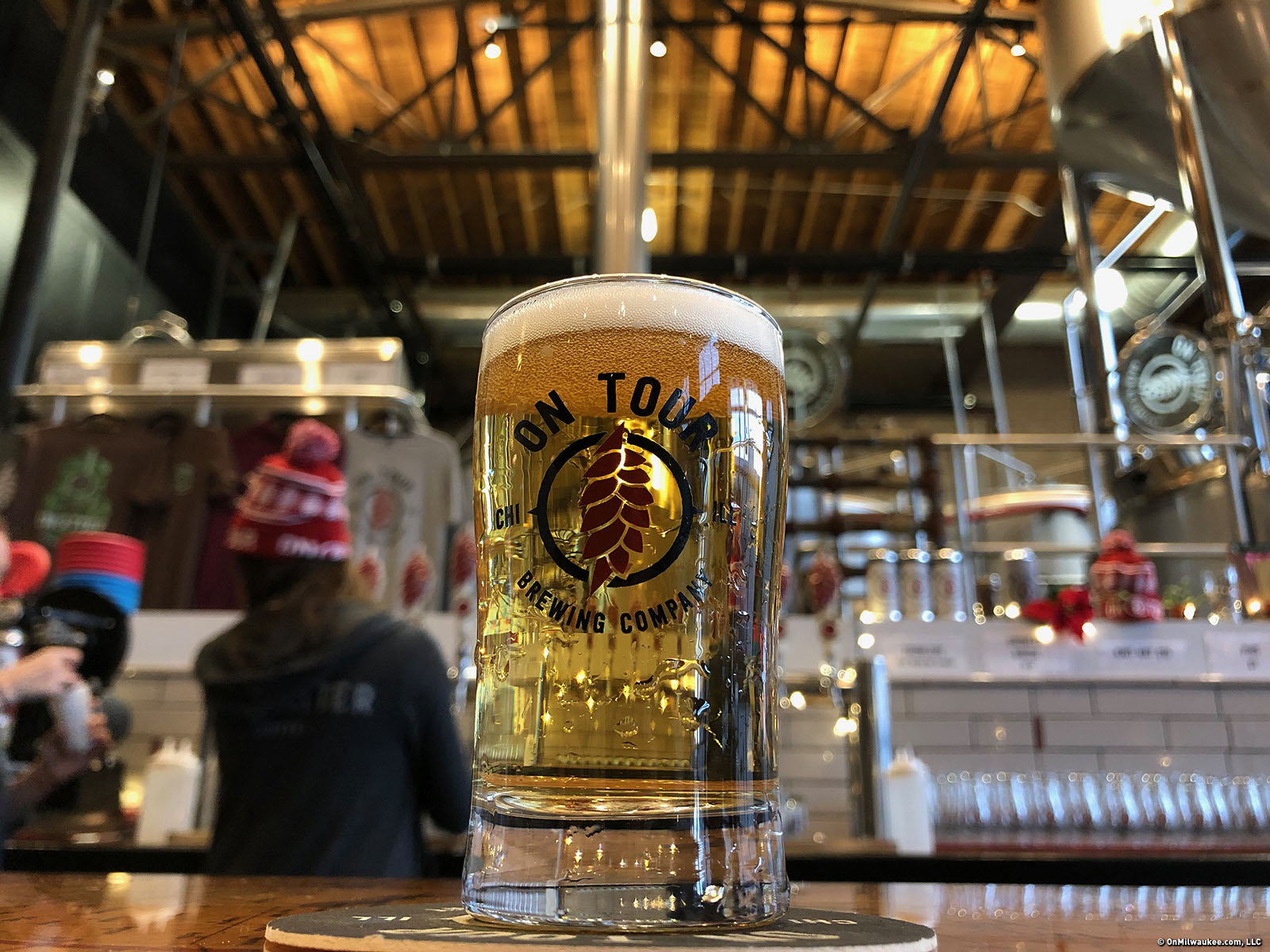Everything old in Chicago is new again. And nowhere is that more true than at The Glunz.
Walking into The Glunz Tavern is a bit like stepping back in time. Thing is, despite the 1910s-era sandwich menu on the wall, The Glunz Tavern has only been open since December.
The Glunz family has a long history in the building at 1202 N. Wells St., right next to the decorative gates welcoming you to Chicago’s Old Town neighborhood. A tavern was opened in the space by Louis Glunz, the grandfather of Barbara Glunz, who owns the business these days with her son Christopher Donovan. (In 1918, Louis opened dance hall and hotel in Fredonia. The dance hall survives and can be seen at W4777 Hwy. 84.)
"The shop survived because it was a unique place," says Donovan. "It was a destination. But a lot of restaurants around closed and for a long time there was nothing around here. Just in the last 10 to 15 years there’s been a huge amount of investment and now it’s really reached a tipping point."
Louis Glunz Jr., Barbara’s father, closed the bar at the dawn of Prohibition and focused instead on the family’s retail operation next door. During the booze ban, the Glunz family sold medicinal alcohol and supplies for making wine at home, which was legal. When the 21st Amendment repealed the Prohibition, the Glunz family re-opened its liquor store and distribution business and the former tavern became little more than a storage space.
"The neighborhood is so strong now," says Donovan. "There’s so much residential property around that that’s really supporting us and that’s, I think, the key to whether we do well or not is whether the neighborhood enjoys it."
It’s hard to see how the neighborhood could resist. The Glunz has a vintage tavern vibe and an old world German immigrant feel but without the kind of excessive darkness and over-decoration that can make some of the longest-lived examples feel a bit oppressive.
Because the neighborhood only recently began to gentrify, the space has remained relatively untouched in the 90 years between iterations of The Glunz Tavern. Beneath wood paneling, Donovan found the original wainscoting. The original hardwood floors were protected for more than a century by a couple layers of paint. The same was true for the original tin ceiling.
Much of the decor – including vintage signs and hanging schoolhouse lights – was found in the building. The bar and a mirror were brought over from the Ambassador East when that institution was shuttered. An old menu board displaying a list of sandwiches was hung in the original Glunz Tavern.
"You get the feeling of warmth," says Donovan. "There’s sort of a formula that designers get paid a lot to do and we stumbled upon it ourselves, where you walk in (and) you feel really comfortable."
The Glunz boasts friendly bartenders – like Colin Cordwell, a true Chicago character, who holsters an armory of obscure film references that he unleashes like a machine gun set on spray – and a menu of delicious, no-nonsense European-influenced fare, like wiener schnitzel, frog legs, Coq au Riesling and gnocchi, alongside classic tavern favorites like burgers – of which Donovan is especially proud – deviled eggs and pretzels.
"(Customers) come in and just feel like, ‘I could stay here for hours. I’d be perfectly contented.’ That’s the feeling people get here," says Donovan. "The sense of belonging and warmth and camaraderie."
CHICAGO BRINGS BACK THE SPEAKEASY
While Prohibition shuttered The Glunz, the 14-year ban on booze that began in 1919 sparked the era of the secret world of the speakeasy, especially in Chicago, where Capone and his contemporaries ran the show.
The Windy City’s passion for the speakeasy has been rekindled in a big way lately.
Take, for example, Prohibit, 116 W. Hubbard, a subterranean bar that you could easily stroll right past without noticing. Though the beats may be modern, Prohibit offers a dark, secretive vibe in a cozy underground room that whispers off-the-grid "intrigue."
For the best speakeasy vibe downtown, however, Untitled, around the corner at 111 W. Kinzie, can’t be beat. Again, there is simply a door and steps leading down. You’d miss it except for the line of folks seeking entry on a weekend night.
There’s no password here. You just slip quietly beneath the streets of Chicago to find a sprawling entertainment bunker that will satiate your desire for whiskey – there are hundreds – cocktails, food and music.
Early in the evening, during dinner service – when delectable small plates (and an astonishing seafood tower) rule – Untitled looks big, but as the night progresses, live period music kicks in and an entire wall slips away to reveal an even larger space. When the band takes a break, the burlesque dancers arrive and your trip back in time is complete.
What customers want – and what Untitled serves up in spades – is "mystery, intrigue and, finally, vintage elegance," says director of operations Jay Carter, who used to own Lo-Cash Live and commutes to his downtown Chicago job every day from his home in Brookfield.
Being a modern, cosmopolitan town, Chicago also pours two fingers of modern speakeasy iterations. Head over to the near west side neighborhoods of Wicker Park and Bucktown for a double-dose.
The Bedford, 1612 W. Division St., housed in the basement of an old bank, cashes in on a great atmosphere. An unassuming speakeasy-style entrance leads you down to the bank’s massive vault, lined with safety deposit boxes (one of them opens ... can you find it?) and turned into a dimly lit lounge space with couches.
There are vintage terrazzo floors and detailed crown moldings but the supper club atmosphere comes from the casual crowd that creates a buzz in every room of the sprawling place and the food – a mix of fresh small plates and entrees – created by UW-Madison alum Mark Steuer.
Travel to 1520 N. Damen, about a mile northwest, where a graffiti mural – which looks a bit like it’s hiding an in-progress build-out of a retail space – and a line of eager patrons are the only signs of The Violet Hour, one of Chicago’s must-see places.
Cell phone use is discouraged here – see the list of rules on the website before you go – and once inside you can see why. The dark space is draped in curtains and low blue light and the glow of iPhones – and the chatter of their users – would water down the mood.
But the vibe emanates from the bar, where a team of incredibly talented mixologists will make you the elixir of your choice – no cosmos please (really, read the rules in advance) – or one from a long list of adventurous cocktails like the "Thigh High," built around Chicago’s much-discussed wormwood bevy called Malort.
I ordered a Redwood Martinez made with Genevieve, Cocchi di Torino, Nux Alpina black walnut liqueur and Combier Kummel that had an eclectic woody flavor unlike anything I’d ever tasted before.
Though those proscriptions on the website might conjure an almost Seinfeldian Soup Nazi experience, the reality is nothing of the sort. The Violet Hour staff can be chatty and fun. Did I mention The Slits were booming from the speakers while we were there?
You need a place to rest your head after a night like this and no place is better suited than the newly revamped Hotel Lincoln, 1816 N. Clark St. The Bay Area-based Joie de Vivre Hotels group bought the vintage hotel and infused it with new life last year.
Now, the 12-story place that was itself home to a Prohibition-era speakeasy and has been a haven for visiting bands performing in town for years, is a boutique hotel with modern decor, a lively vibe and a trio of dining venues at, quite literally, every level.
In the lobby, Elaine’s Coffee Call pulls ace espresso and across the lobby Perennial Virant serves dinner and weekend brunches. If you visit Chicago these days you likely won’t escape hearing at least some buzz about Chef Paul Virant, who runs all the Hotel Lincoln dining options.
The worst-kept secret here, though, is J. Parker – named for the infamous body guard who slipped out to get a beer while Lincoln watched a play at the Ford Theater in 1865 – in a newly built rooftop penthouse. An intimate indoor bar and dining room serves a small selection of tapas with big flavors (don’t miss the crispy spinach and ricotta pierogies!), and views up Lincoln Avenue and out across Lincoln Park to Lake Michigan. But go on a warm night to enjoy the south-facing patio with stunning views of Downtown.
The next morning, refuel at Nookie’s, around the corner at 1746 N. Wells St. A family-run place opened by the current owners’ grandfather, Nookie’s is clearly a neighborhood anchor, where customers come in to chat or read the paper and eat some of the heartiest breakfast on tap in Old Town.
For lunch, travel back in time again at The Gage, located in an 1889 building at 24 S. Michigan Ave. designed by Holabird and Roche in collaboration with no less than Louis Sullivan. The 300-seat tavern is decorated with fabulous tile work that recalls classic vintage eateries like New York’s Grand Central Oyster Bar.
The food is classic gastropub with a stellar fish and chips, Scotch eggs, poutine and fried pickles. Grabbing a Great Lakes Eliot Ness Vienna-style lager to wash it all down seems like a good way to put an exclamation point on a jaunt through Chicago’s speakeasies.
Born in Brooklyn, N.Y., where he lived until he was 17, Bobby received his BA-Mass Communications from UWM in 1989 and has lived in Walker's Point, Bay View, Enderis Park, South Milwaukee and on the East Side.
He has published three non-fiction books in Italy – including one about an event in Milwaukee history, which was published in the U.S. in autumn 2010. Four more books, all about Milwaukee, have been published by The History Press.
With his most recent band, The Yell Leaders, Bobby released four LPs and had a songs featured in episodes of TV's "Party of Five" and "Dawson's Creek," and films in Japan, South America and the U.S. The Yell Leaders were named the best unsigned band in their region by VH-1 as part of its Rock Across America 1998 Tour. Most recently, the band contributed tracks to a UK vinyl/CD tribute to the Redskins and collaborated on a track with Italian novelist Enrico Remmert.
He's produced three installments of the "OMCD" series of local music compilations for OnMilwaukee.com and in 2007 produced a CD of Italian music and poetry.
In 2005, he was awarded the City of Asti's (Italy) Journalism Prize for his work focusing on that area. He has also won awards from the Milwaukee Press Club.
He has be heard on 88Nine Radio Milwaukee talking about his "Urban Spelunking" series of stories, in that station's most popular podcast.







